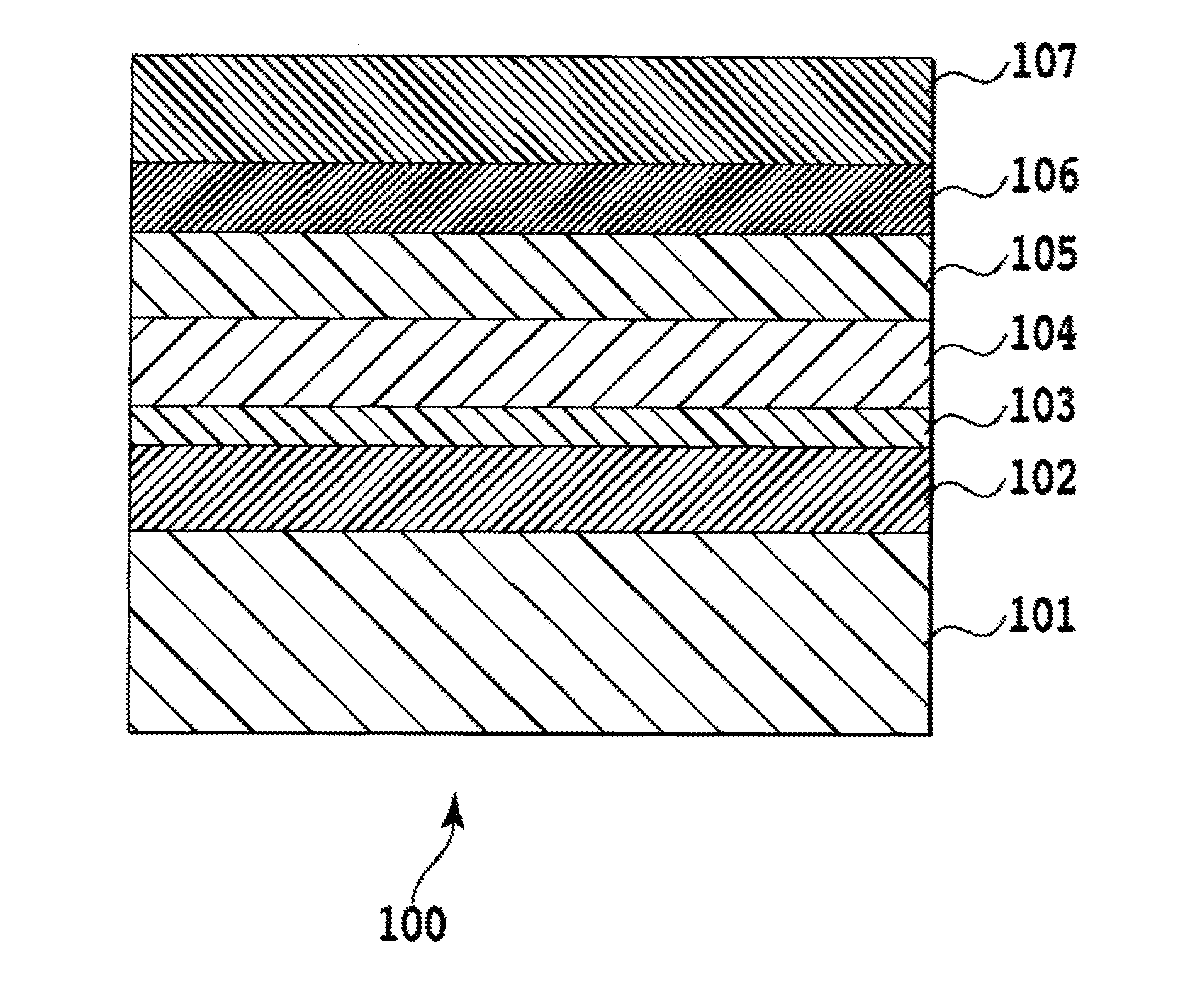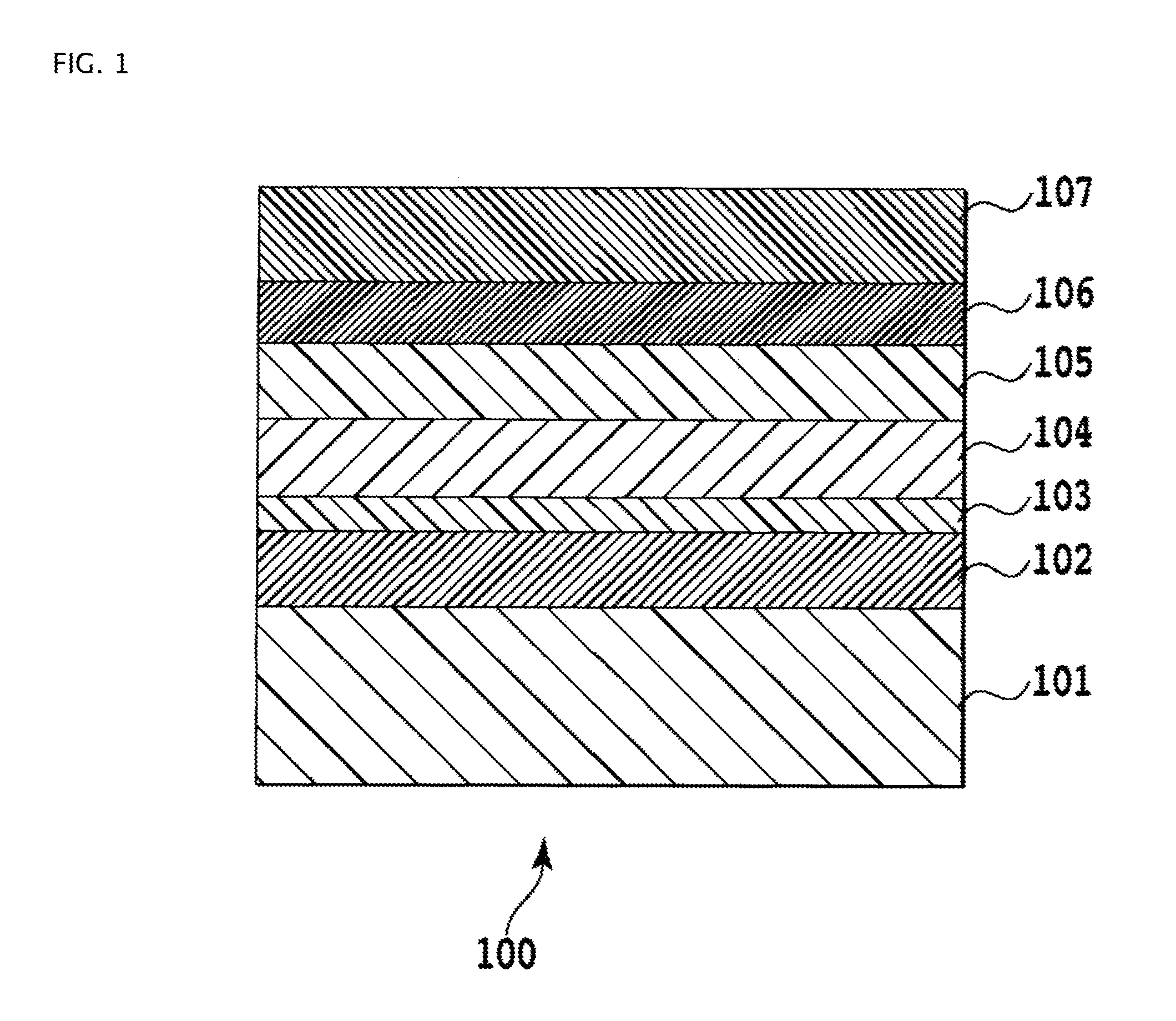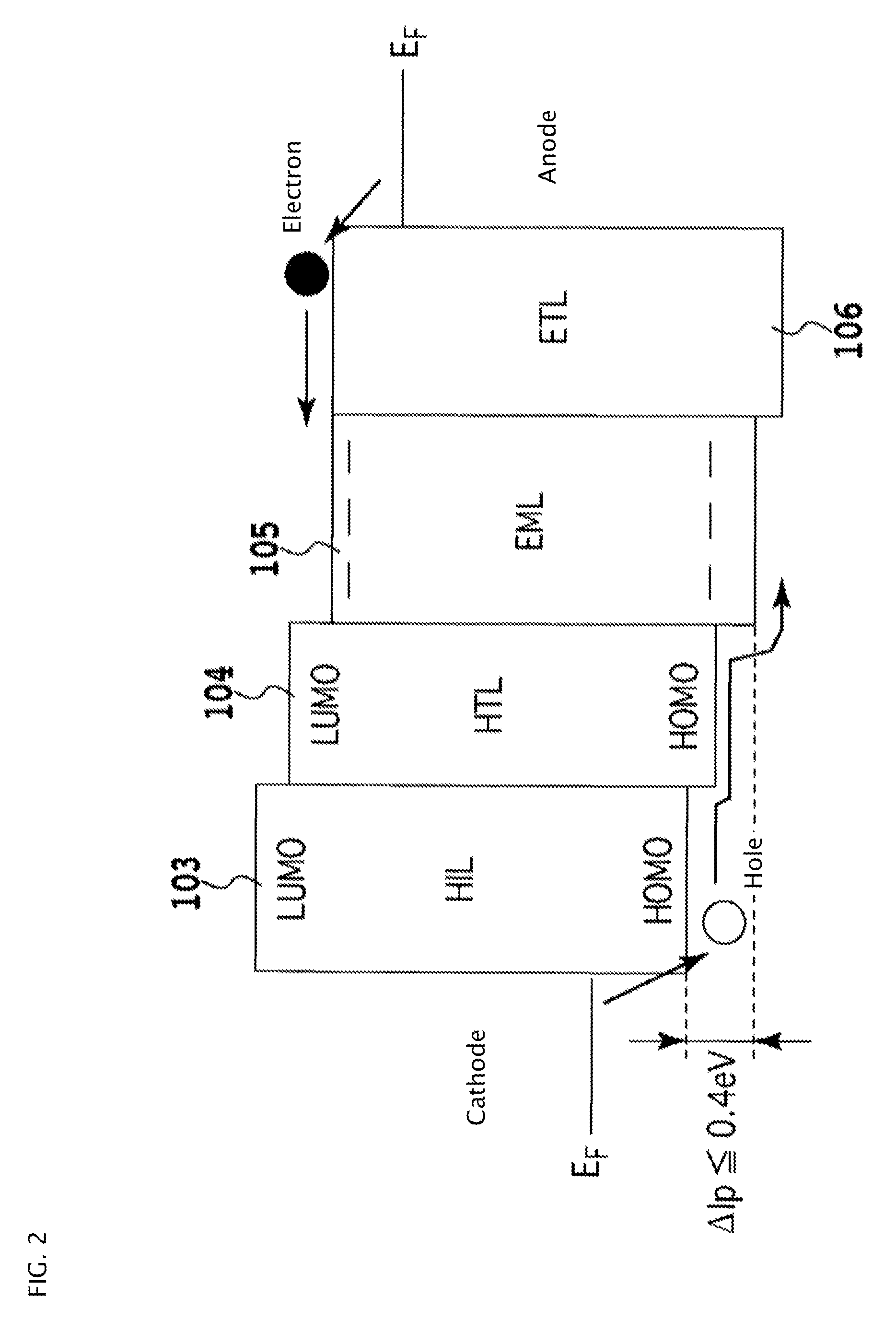Organic electroluminescent device
a technology of electroluminescent devices and organic el, which is applied in the direction of electroluminescent light sources, thermoelectric devices, electric lighting sources, etc., can solve the problems of reducing reducing the luminous efficiency of the device, and reducing the effect of reducing voltage, so as to reduce the power consumption of the organic el device, improve the luminous efficiency of the device, and reduce the driving voltage
- Summary
- Abstract
- Description
- Claims
- Application Information
AI Technical Summary
Benefits of technology
Problems solved by technology
Method used
Image
Examples
example 1
[0069]An IZO film was deposited on a glass substrate (50 mm long×50 mm wide×0.7 mm thick, Corning, 1737 glass) by DC Magnetron sputtering (target: In2O3+10 wt % ZnO, discharge gas: Ar+0.5% O2, discharge pressure: 0.3 Pa, discharge power: 1.45 W / cm2, substrate transport speed: 162 mm / min). This IZO film was then processed into the shape of stripes having a width of 2 mm by photolithography to form an IZO electrode having a film thickness of 110 nm and a width of 2 mm.
[0070]Next, a hole injection layer to which had been added an electron-accepting dopant was deposited on the IZO electrode. The deposition procedure consisted of simultaneously heating NPB and F4-TCNQ by resistance heating vapor deposition and simultaneously depositing using a vapor deposition rate for the F4-TCNQ of 0.02 Å / s versus a vapor deposition rate for the NPB of 1 Å / s to deposit a hole injection layer composed of an F4-TCNQ-doped NBP film at a thickness of 80 nm.
[0071]Continuing, TCTA was deposited to a thicknes...
example 2
[0075]A blue organic EL device was produced in the same manner as Example 1 with the exception of using a material in which p-TTA was doped with F4-TCNQ for the material of the hole injection layer. At this time, the vapor deposition rate of the p-TTA was 1 Å / s and the vapor deposition rate of the F4-TCNQ was 0.02 Å / s.
example 3
[0076]A blue organic EL device was produced in the same manner as Example 1 with the exception of using NPB for the material of the hole transport layer.
PUM
 Login to View More
Login to View More Abstract
Description
Claims
Application Information
 Login to View More
Login to View More - R&D
- Intellectual Property
- Life Sciences
- Materials
- Tech Scout
- Unparalleled Data Quality
- Higher Quality Content
- 60% Fewer Hallucinations
Browse by: Latest US Patents, China's latest patents, Technical Efficacy Thesaurus, Application Domain, Technology Topic, Popular Technical Reports.
© 2025 PatSnap. All rights reserved.Legal|Privacy policy|Modern Slavery Act Transparency Statement|Sitemap|About US| Contact US: help@patsnap.com



